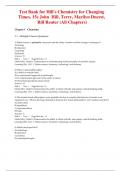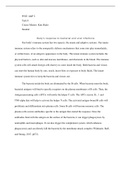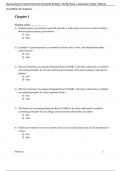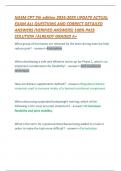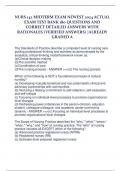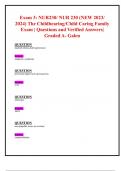Exam (elaborations)
TEST BANK FOR Understanding Medical-Surgical Nursing 6th Edition by Linda S. Williams & Paula D. Hopper , ISBN: 9780803668980 |COMPLETE TEST BANK| Guide A+
TEST BANK UNDERSTANDING MEDICAL-SURGICAL NURSING 6TH EDITION BY WILLIAMS 1. The nurse is caring for a group of patients on a medical-surgical unit. Which patient should the licensed practical nurse/licensed vocational nurse (LPN/LVN) assess first? 1. A patient with a blood glucose of 42 mg/dL 2. A ...
[Show more]





